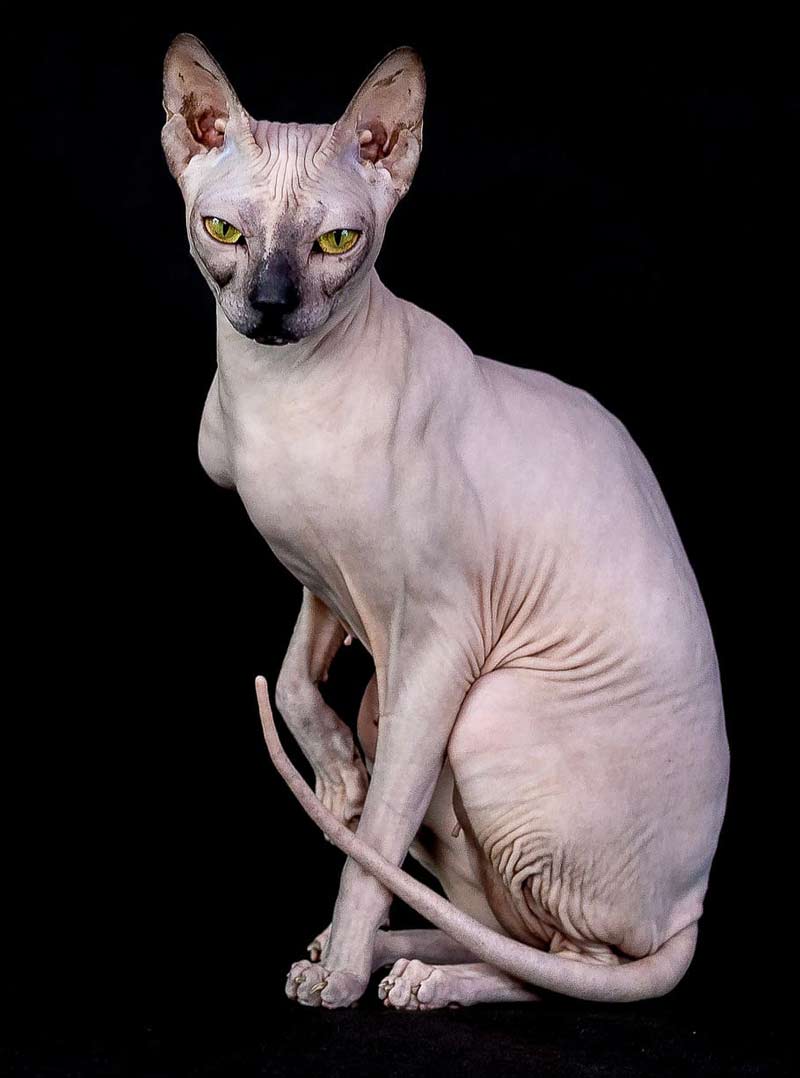Hairless cats stand out among their furry counterparts for more than just their lack of fur. These unique felines possess distinct grooming requirements and personalities that set them apart from other breeds. Unlike most cats, whose soft, hairy coats require regular grooming to maintain, hairless cats have minimal to no fur, which means they don’t shed like their counterparts. However, this doesn’t mean they’re entirely maintenance-free. Due to their lack of fur, hairless cats are more susceptible to skin issues, requiring special attention to keep their skin healthy and moisturized. Their grooming routine often involves regular baths to remove excess oils and prevent skin problems.
Hairless Cat: Profile, Traits, Facts, Size, Groom, Health, Care
In addition to their grooming needs, hairless cats also exhibit unique personalities that make them intriguing companions. Despite their lack of fur, these cats are known for their warmth and affection towards their owners. They are often described as affectionate, playful, and curious creatures, forming strong bonds with their human families. However, their personalities can vary widely depending on individual temperament and upbringing. Some hairless cats may be more outgoing and social, while others might be more reserved or independent. Understanding and catering to the specific needs and quirks of each hairless cat is essential for building a harmonious relationship between pet and owner.
More Interesting Articles
- 60 Arctic Fox Fun Facts – Interesting Facts to Know
- All About Arctic Foxes – Facts | Profile | Adaptation
- Domesticated Arctic Fox – Can There Be a Pet Fox?
- Arctic Fox Life Cycle – Stages | Facts | Information
- 50 Arctic Fox Interesting Facts to Surprise Anybody
- 26 Fennec Fox Adaptations and Survival Factors
- Arctic Hare Adaptations and Survival Factors
- Where does Arctic Fox Stand on the Food Chain?
- European Polecat – Ferret | Facts | Diet | Habitat
- 53 Amur Leopard Facts and Information
- Arctic Fox – Description | Profile | Conservation
- Arctic Fox Endangered – Threats and Conservation
- Arctic Fox Adaptations in the Tundra Region
- Least Weasel | Mustela Nivalis | Lesser Weasel Facts
- Long-Tailed Weasel – Facts | Habitat | Size | Diet | Profile
- European Pine Marten – Profile | Facts | Diet | Habitat | Size
- Short Tailed Weasel or Stoat Facts and Description
- Flying Squirrel – Profile | Description | Odors | Life Cycle | Diet
- Black Squirrel – Profile | Distribution | Habitat | Facts
- Red Squirrel | Cirrus vulgaris – Profile | Habitat | Facts | Food

